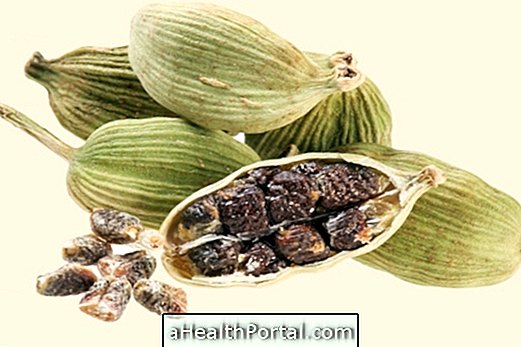The benefits of sesame are especially related to street fiber richness that helps to improve bowel functioning and reduce the amount of cholesterol, can be added in meals like salads and soups, to treat constipation or high cholesterol, for example.
However, the benefits of sesame go beyond that, as it is able to:
- Decrease appetite and help you lose weight;
- Reduce the risk of developing heart disease;
- Help control blood pressure;
- Improve skin health by facilitating healing and avoiding age spots;
- Increase the body's defenses;
- Keep bones and teeth strong;
- Avoid liver damage by eliminating toxic organ products;
- Improve mood;
- Regulate the production of hormones.
In addition, sesame is also rich in folate and therefore can be used in feeding pregnant women to decrease the risk of malformations in the baby, such as spina bifida or heart disease. In addition, it also prevents cases of anemia in pregnant women and pre-eclampsia.

Benefits of Black Sesame
The benefits of black sesame are especially help control diabetes and facilitate digestion by its richness in fiber.
There are different varieties of sesame, but their benefits are similar, because the nutritional characteristics are not very different between the different varieties, from black sesame, roasted, with bark and whole.
However, the best way to consume the seed is in whole, raw or bark form. The benefits of whole sesame are to have all the nutrients in the maximum amount and the benefits of sesame with peel are to increase bowel movement, transit of food cake and activate blood circulation in the intestinal wall because sesame peel has the presence of linoleic acid .
Benefits of Sesame to Lose Weight
The benefits of sesame for slimming are to decrease appetite and increase satiety by softening the absorption of carbohydrates. In addition, the sesame will also facilitate digestion bringing a sense of comfort in the body.
To have the benefits of black sesame for weight loss simply add 1 tablespoon of sesame in a glass of yogurt to quench your appetite. Sesame does not alter the taste of food and can be consumed in the yogurt in the middle of the morning or afternoon, causing the individual not to overdo it at lunch and dinner.
To add to the menu a good dose of sesame, one can throw 1 tablespoon of sesame in the salad and in the preparation of the rice, for example.
Nutritional composition of sesame
The following table shows the nutritional composition:
| Amount per 10 g of sesame | |||
| Energy: 61.4 calories | |||
| Carbohydrates | 2.3 g | Protein | 1.8 g |
| Saturated fat | 0.7 g | Lipids | 5 g |
| Fibers | 1.7 g | Vitamin B1 | 0.1 mg |
| Folate | 9.6 mcg | Calcium | 13.1 mg |
| Potassium | 77.4 mg | Magnesium | 34.6 mg |
| Sodium | 58.8 mg | Potassium | 40.6 mg |
A good tip to have these benefits without having to eat the natural seed is to buy sesame paste, known as Tahini, which can be added to various recipes like hummus and falafel, or just to spread the bread.
























